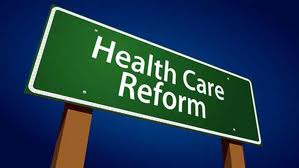Would you sell your home’s storm doors to pay for this winter’s heating bills? That’s what Congress did Friday to pay for part of a 10-month “doc fix.”
Would you sell your home’s storm doors to pay for this winter’s heating bills? That’s what Congress did Friday to pay for part of a 10-month “doc fix.”
Friday’s payroll tax cut extension bill included $18 billion to maintain Medicare physician salaries at current levels for the rest of this year. Unlike the payroll tax extension, Congress insisted on paying for the doc-fix with offsetting budget cuts.
They raised nearly a third of the money by cutting $5 billion from prevention programs initiated under the Affordable Care Act. The rest came from reduced payments to hospitals, nursing homes, and clinical labs, and reduced Medicaid payments to Louisiana.
Smoking cessation programs? Cut. Outreach to schools to get kids to eat more fruits and vegetables? Cut. More programs at local YMCAs to prevent diabetes? Cut.“The idea of paying for a ten-month fix in physician payments with a ten-year cut in prevention programs is the ultimate penny-wise, pound-foolish move,” said Richard Hamburg, deputy director of Trust for America’s Health, which lobbies for community prevention programs and more funding for state and local health departments.
“We’re robbing from the one place in the Affordable Care Act where we can really do something about prevention,” lamented Kenneth Thorpe, director of the Partnership to Fight Chronic Disease and a professor at Emory University. “The fact that it ends up propping up a collapsing fee-for-service system is the ultimate irony.”
As if on cue, the Government Accountability Office on Friday released a study on how well fee-for-service physicians are doing in delivering recommended preventive services to the nation’s Medicare population. It found that just two-thirds of women over 65 received recommended biannual mammograms, while 40 percent of men over 75 still receive prostate cancer screening tests, even though it is not recommended for men over that age.
Just 7 percent of Medicare beneficiaries are taking advantage of the program’s “welcome to Medicare” physician exam where recommended prevention services are offered free of charge. “Overall, Medicare beneficiaries who did not receive certain preventive services commonly reported that they had limited information on prevention,” the report said.
Experts argue that community-based prevention programs – such a mobile flu shot programs – could make up for the fee-for-service system’s failings. President Obama’s signature health care reform law included a shade under $19 billion over the next ten years to pay for them. The Centers for Disease Prevention and Control in its first year of operation – the program is still ramping up – has already given out $103 million to 61 public health agencies and programs in 36 states.
The program’s priorities include promotion of tobacco-free living; active living and healthy eating; and prevention and control of high blood pressure and high cholesterol. The largest single grant of $10 million went to Texas’s state Department of Health to serve 10 million people outside its largest counties. Texas has the highest number of uninsured people in the nation, and among the highest rates of obesity and diabetes.
Other major recipients included the local health departments in New York City ($8.4 million) and Los Angeles ($9.8 million) and the entire states of Illinois ($4.8 million) and Iowa ($3.0 million). While existing grants probably won’t be cut, expansions to other cities and towns not already in the program will probably slow or be eliminated entirely.
Public officials say these latest cuts, which come on top of cuts in grants to public health department included in President’s recent budget due to last year’s Budget Control Act, will likely force many communities to use what little money they get from the program to offset cuts in prevention areas they already support such as smoking cessation and childhood immunization. “Public health has been chronically underfunded,” said TFAH’s Hamburg. “In light of other cuts in discretionary spending, this fund could well end up being used for those.”






